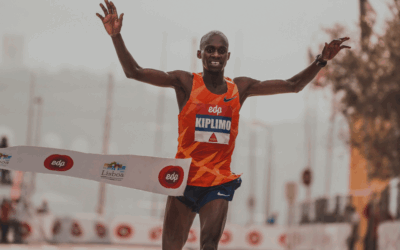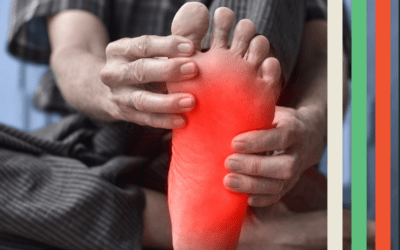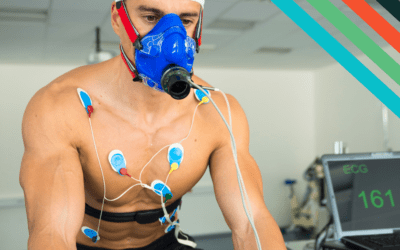Quick Navigation
- Introduction: Is Your Gait Holding You Back?
- What is Gait Analysis?
- The Impact of Gait on Performance
- How Gait Analysis Can Improve Performance?
- Case Study: The Australian Study on Training Availability and Performance
- Gait Analysis in Action: A Client’s Experience
- Conclusion
- Author’s Bio
- References
Introduction: Is Your Gait Holding You Back?
Every step you take while running or walking is a reflection of your movement efficiency. But what if your gait is holding you back?
Many athletes struggle with inefficiencies in their stride that contribute to pain, injury, and suboptimal performance. Gait analysis provides a data-driven approach to assessing movement mechanics, helping athletes refine their technique, reduce injury risk, and unlock their full potential.
In this article, we explore how your gait impacts performance, and how gait analysis can help you assess movement inefficiencies that may be holding you back. After reading, you can contact us if you need more help!
What is Gait Analysis?
Gait analysis is the systematic study of human locomotion (walking/running), typically using video or sensor-based technology to assess the mechanics in real time.
This process examines movement patterns, joint angles, foot strike patterns, stride length, and muscle imbalances to identify inefficiencies or risks of overuse injuries. By analyzing these elements, athletes and practitioners can make informed decisions to improve running form, enhance athletic performance, and reduce the risk of injury.
The Impact of Gait on Performance
Gait mechanics play a crucial role in determining an athlete’s efficiency and injury resilience.
Poor movement patterns , such as excessive pronation, limited hip extension, or inefficient foot strikes, can lead to compensatory movements that increase the risk of overuse injuries. According to Running Mechanics and Gait Analysis by Ferber and Macdonald (2014), understanding these mechanics is essential for optimizing performance and preventing injuries.
Performance is not just about speed or endurance; it also involves how effectively an athlete moves. Analyzing gait allows for targeted interventions, such as strength training or running form adjustments, which can contribute to smoother, more efficient movement and improved overall running performance.
How Gait Analysis Can Improve Performance
A detailed gait analysis can provide actionable insights into an athlete’s movement efficiency.
Key benefits include:
- Identifying Asymmetries and Imbalances: Muscle imbalances and joint asymmetries can hinder performance and increase injury risk. Gait analysis helps detect these discrepancies early, allowing for corrective measures through strength training and movement retraining.
- Optimizing Stride Mechanics: Subtle changes in stride length and cadence can significantly impact energy expenditure and running economy. Adjusting stride mechanics based on gait analysis can help athletes move more efficiently and reduce fatigue.
- Reducing Injury Risk: By identifying faulty movement patterns, gait analysis enables proactive interventions to prevent common injuries such as shin splints, IT band syndrome, and plantar fasciitis.
- Enhancing Training Programs: Gait data can be integrated into individualized training programs to address specific weaknesses, improving both performance and injury prevention.
Case Study: The Australian Study on Training Availability and Performance
A study by Raysmith and Drew (2016) examined the relationship between training availability and performance outcomes in elite Australian track and field athletes (Ferber & Macdonald (2014). The findings revealed that athletes who completed over 80% of their planned training weeks were seven times more likely to achieve their performance goals compared to those who trained less consistently.
This study underscores the importance of maintaining consistent, high-quality training—something that gait analysis can directly support by identifying and mitigating biomechanical inefficiencies before they lead to injury.
By reducing injury risk and ensuring more consistent training, gait analysis plays a pivotal role in long-term athletic development and peak performance.
Gait Analysis in Action: A Client’s Experience
Gait analysis is one of the many tools we use to help enhance performance, reduce injury risk, and optimize running mechanics for our clients. Here’s a testimonial from one of our clients who previously struggled with knee pain:
“Vital is incredible at what they do. When I first started seeing them, I was suffering from an unknown source of knee pain. I had been to multiple doctors and other specialists to no avail. The team at Vital worked with me to understand my goals and what triggered my knee pain. They created a program that helped me strengthen the areas contributing to my issues while also correcting my gait mechanics. I can now run without any knee pain and feel strong and confident. I would highly recommend Vital to anyone and am excited to keep working with them going forward!” – Kayla Lebel (Olde).
Conclusion
Your gait is a critical factor in your performance, injury prevention, and overall movement efficiency. Whether you’re an elite athlete or a recreational runner, optimizing your running mechanics through gait analysis can help you move more efficiently, reduce pain, and improve performance.
Investing in gait analysis isn’t just about running better—it’s about training smarter and ensuring longevity in your sport. If you’re seeking to address gait-related issues or simply want to refine your movement for better health and performance, reach out to our team today.
References
Raysmith, B. P., & Drew, M. K. (2016). Performance success or failure is influenced by weeks lost to injury and illness in elite Australian track and field athletes: A 5-year prospective study. Journal of Science and Medicine in Sport, 19(10), 778–783. https://doi.org/10.1016/j.jsams.2015.12.515
Ferber, R., & Macdonald, S. (2014). Running mechanics and gait analysis.
Quick Navigation
- Introduction: Is Your Gait Holding You Back?
- What is Gait Analysis?
- The Impact of Gait on Performance
- How Gait Analysis Can Improve Performance?
- Case Study: The Australian Study on Training Availability and Performance
- Gait Analysis in Action: A Client’s Experience
- Conclusion
- Author’s Bio
- References




